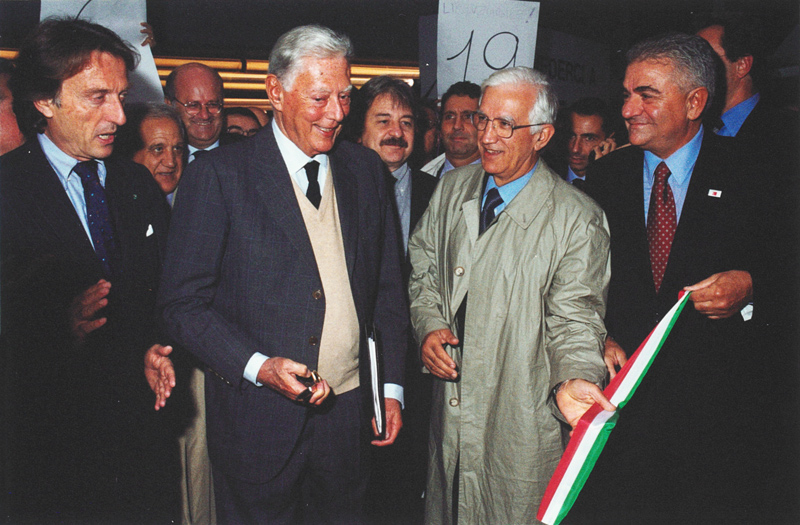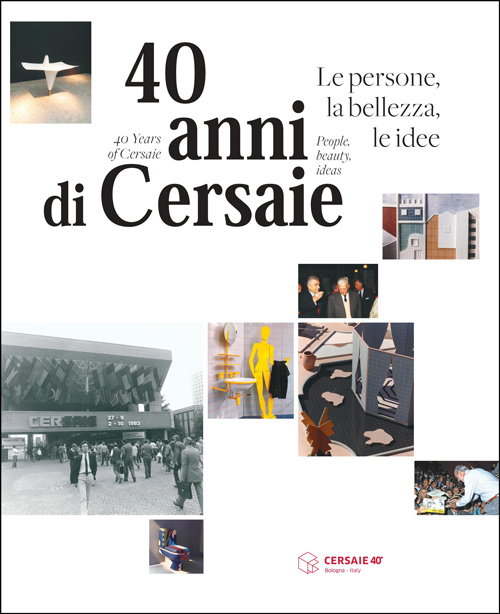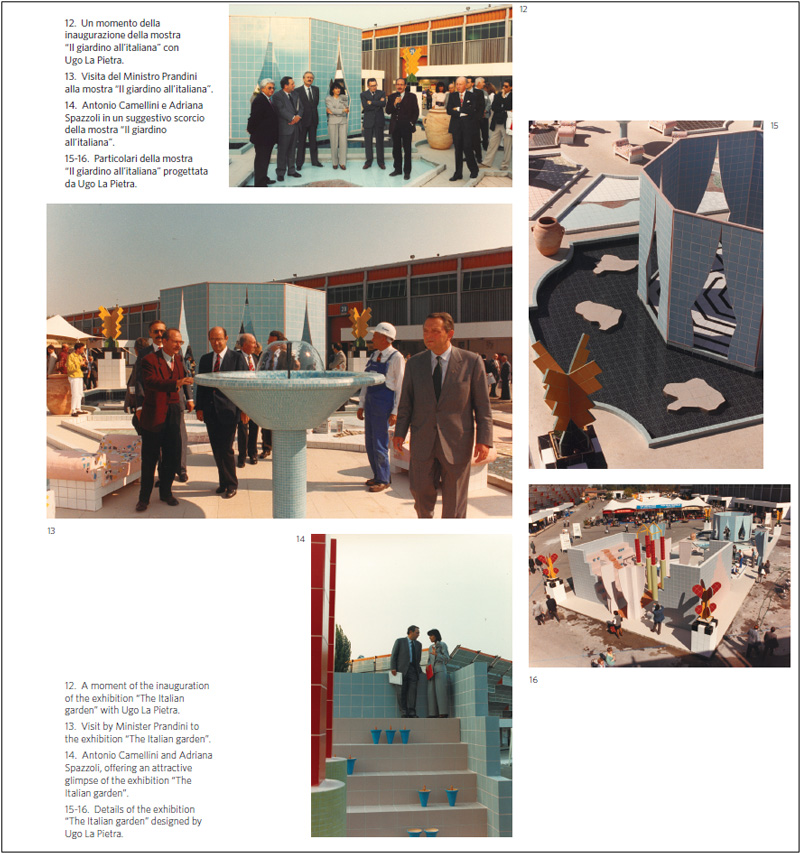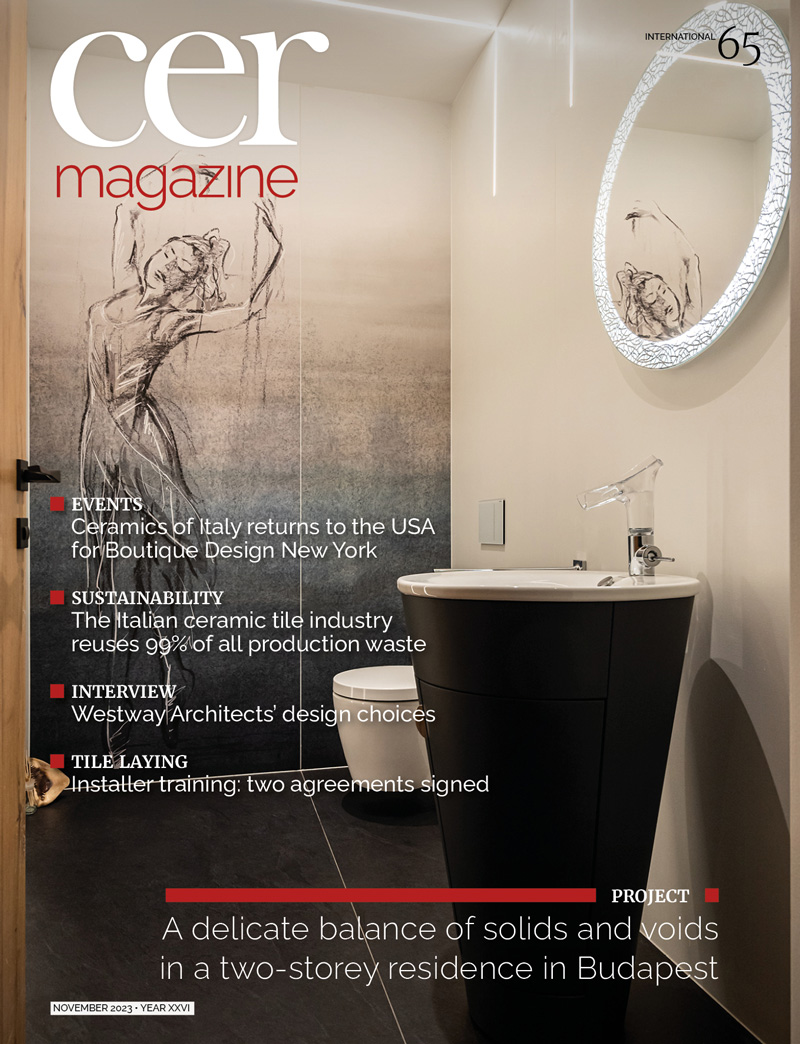40 years of Cersaie. People, beauty, ideas
A book chronicling the history of Cersaie had never previously been written, so the show’s fortieth anniversary provided the perfect opportunity to fill this gap. As Confindustria Ceramica chairman Giovanni Savorani points out in the introduction to the book entitled “40 years of Cersaie. People, beauty, ideas”, a trade fair is an inherently temporary event made up of “a multitude of small, wonderful spaces that appear out of nowhere in the fortnight allotted for booth set-up and then vanish again within a week after the exhibition is over”. Of all the work done by hundreds of thousands of people, almost nothing remains aside from memories, orders and of course photographs! Moreover, Cersaie’s organisational machinery starts up each year many months before the event, leaving little time between one edition and the next to pause and reflect on what has been accomplished. Each year, the focus is on organising yet another event that presents something new and fresh.
For this reason, it seems almost miraculous – especially within such a dynamic sector as the Italian ceramic industry – that the photographs taken over the years should have been preserved and catalogued in such a way that they could be used to compile this book.
Over the course of four decades, the archives of the Italian Ceramic Tile Industry Documentation Centre have accumulated around 100,000 images, representing an almost boundless source of information for reconstructing the history of a trade fair that began back in 1983 and is still the most important global event for the ceramic industry.
Of course the photographs themselves do not provide a complete picture of this history. Other sources, including personal testimonies and data, need to be analysed, but the images serve as a valuable starting point for understanding the real nature of the event in both the past and present.
So what can we learn from these photographs, from the black and white and subsequently colour images that were prevalent in the early years through to the high-resolution digital images taken more recently?
The images are organised by decades and arranged in chronological order. For each year, we have chosen to publish photos of the institutional events organised by the Italian Ceramic Tile Manufacturers’ Association, such as the Economic Conference and the ribbon-cutting ceremony. Far from being a formality, the Economic Conference has always addressed not only the performance of the ceramic industry but also the industry’s economic data within a broader national and international economic context. This is clearly evident from the photos taken during the conference, which always show the Association’s top management alongside leading government figures. Depending on the topic of discussion (such as international competition, Made in Italy and sustainability), the conference has also welcomed international representatives of Italian business, such as Umberto Agnelli, vice chairman and managing director of IFI (Istituto Finanziario Industriale, the Agnelli group’s financial holding company) in 2000 and Marco Tronchetti Provera, chairman and managing director of Pirelli, in 1998. Similarly, the economic conference has frequently hosted well-known economists such as Romano Prodi, who attended the first edition of Cersaie back in 1983, Paolo Savona in 1993 and Jacques Attali in 2011, to mention just a few.

Luca Cordero di Montezemolo, Umberto Agnelli, Vittorio Prodi and Angelo Borelli. Inauguration of Cersaie 2000.
While leafing through the book, it’s remarkable to find that a trade fair has hosted a number of global figures who are renowned leaders in their fields. One particularly notable example is Nobel Prize-winning physicist Arno Penzias, who participated in the 1996 economic conference entitled “On the Threshold of the Third Millennium” and gave a presentation on the state of information technology and telecommunications. At the time, Penzias held the position of Vice Chairman of Research at AT&T Laboratories and served as the head of Bell Labs Research, which was widely regarded as the world’s most advanced information technology research institution.
During its 40-year history, Cersaie has also hosted no fewer than 13 Pritzker Prize winners, a presence that has become more prominent since the launch of Cersaie’s “Building, Dwelling, Thinking” cultural programme in 2009. An infographic at the end of the book provides a comprehensive list of these Pritzker Prize laureates, alongside hundreds of other architects, designers, university professors, photographers, writers and journalists who over the course of four decades have delivered lectures, designed and curated exhibitions or simply visited the exhibition halls.
The photos serve as a kind of family album for the dozens of Italian ceramic entrepreneurs who have been instrumental in building the industry’s success. These entrepreneurs have established their companies as global leaders, attracting thousands of foreign visitors to Bologna every September to witness the latest innovations. Examples include Alfredo Romani, Chairman of Assopiastrelle in 1983 and at the time manager of Ceramica Della Robbia, at an institutional event; entrepreneurs in their company booths, such as a photo from 2014 in which the photographer captured a handshake between Luca Mussini, Chairman of Atlas Concorde, and Maria Elena Boschi, at the time Minister for Reform and Parliamentary Relations; and Adriana Spazzoli, Giorgio Squinzi’s wife, pictured in a splendid 1989 photo with Antonio Camellini, then Chairman of Assopiastrelle, next to an installation from the exhibition by designer Ugo La Pietra, sponsored by Mapei.
Besides entrepreneurs, politicians and architects, Cersaie has also had its share of visits from well-known personalities such as athletes (world boxing champion Nino Benvenuti in 1984), footballers (Roberto Bettega in 1996), volleyball players, Formula One racing teams, showgirls (Simona Ventura in 1996), cartoonists (Milo Manara in 2013) and comedians (Bruno Arena of the “I fichi d’India” duo in 2011), to mention just a few.
Last but not least, the images chosen for each year include photographs of the ceramic tile and bathroom furnishing companies’ booths. While representing only a small selection of the total number of images contained in the archive (suffice it to think that the average number of exhibitors at Cersaie is around 600 each year), these images offer glimpses of the beauty of the products, their connection with their respective design periods and the evolution in style, aesthetics and quality that has occurred over the years.
Cersaie has also hosted groundbreaking exhibitions, some of which have showcased product prototypes that anticipated market trends and offered a preview of the lines that would appear on the market several years later. One example is the washbasin prototype pictured in photo no. 11 on page 80, which featured in the exhibition entitled “The Bathroom – Personalities between Experimentation and Creativity” coordinated by architect Laura Villani in 2011.
November 2023








